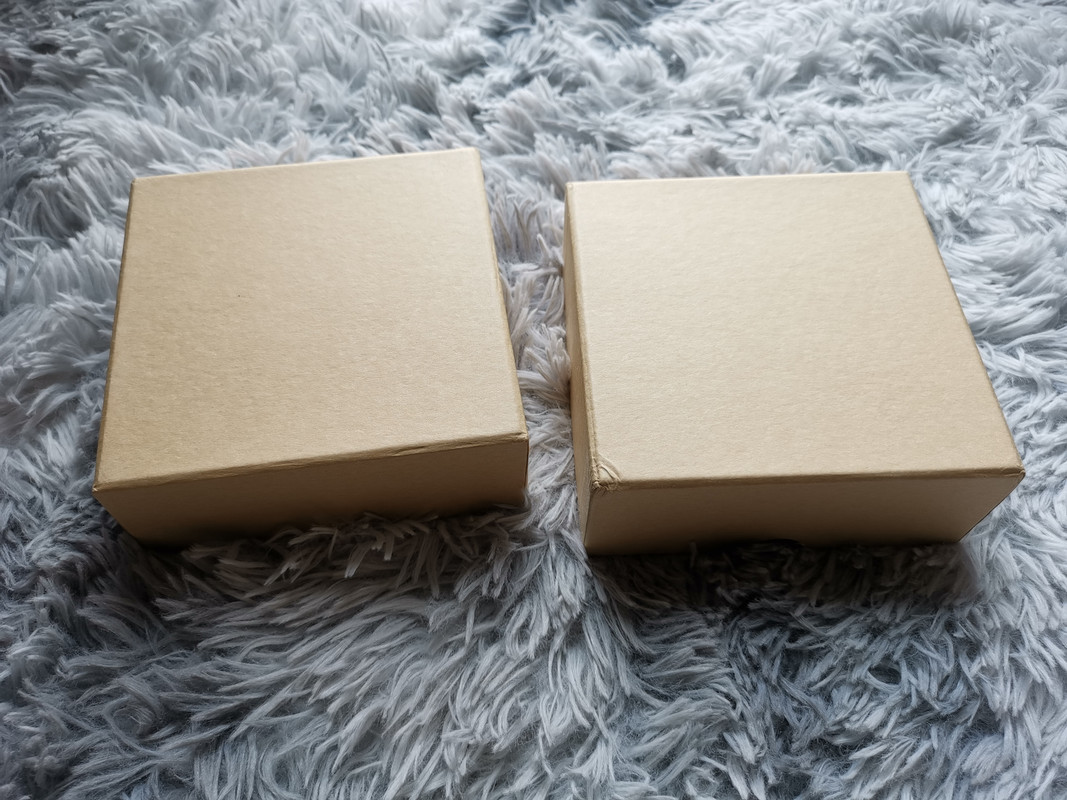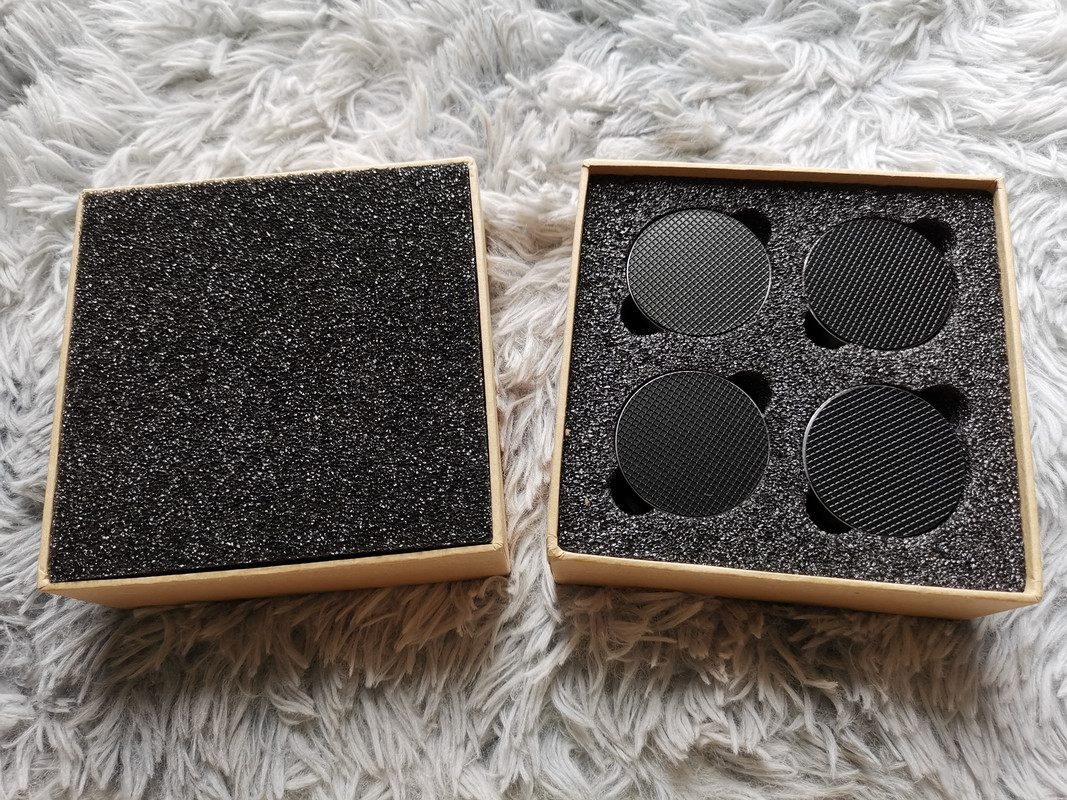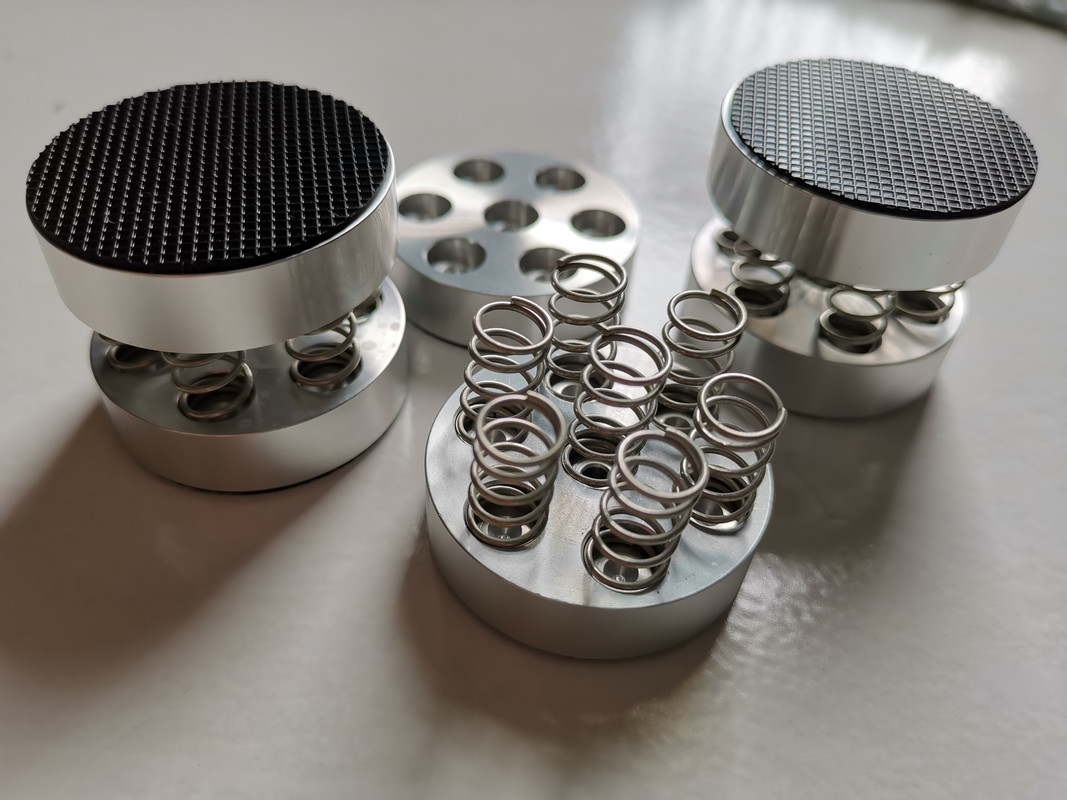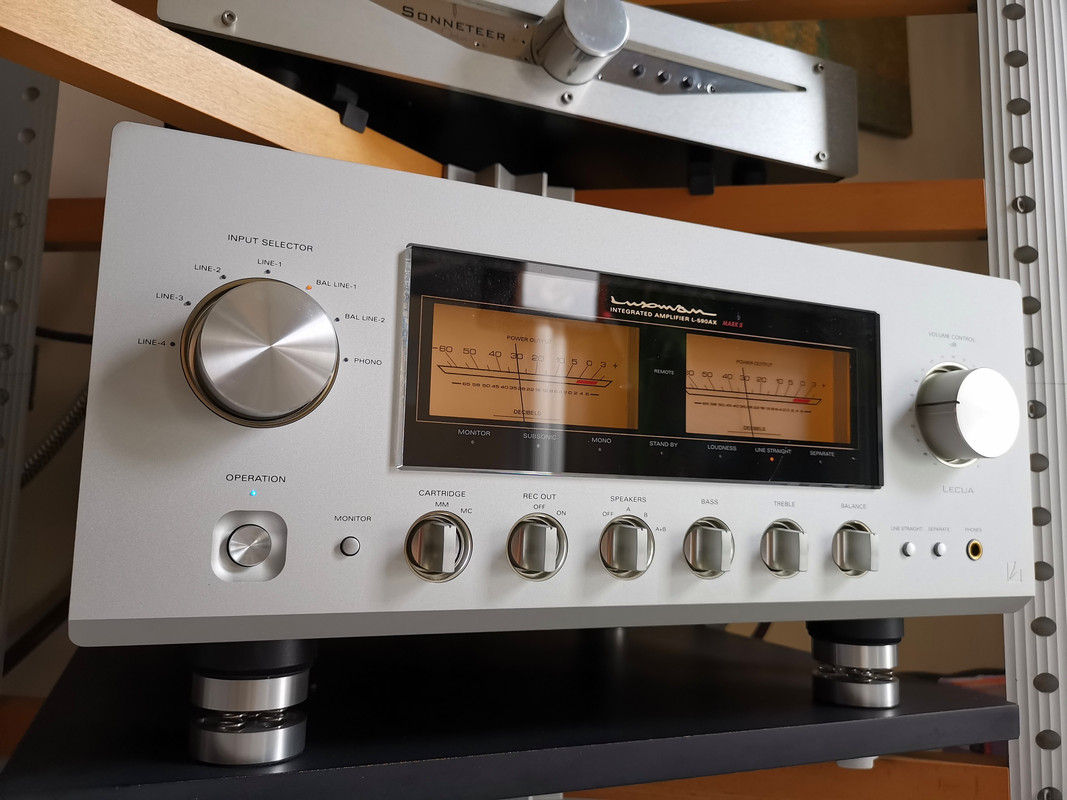Isoacoustics Orea vs Townshend Seismic Pod on Components
My components are currently placed on a good rack with Finite Elemente Cerabase footers at the bottom of the rack. I was wondering if individual isolators such as the Orea or Seismic Pod placed under components can further improve sound quality. I've read contradictory comments about the Orea. Some say they brought an appreciable difference when placed under components such as DAC or amplifiers. Some say they bring nothing to the sound, zero difference.
I would appreciate experiences on the Isoacoustics Orea or the Townshend Seismic Pod, or the comparison between the two products. The Oreas look better than the Pods to me although the latter may be costlier.
Of the two you mention, I've only tried the Oreas and love what they do for my gear. It's amazing how using them just under my integrated made an improvement in focusing the music and soundstage. Under my SACD player made an even bigger improvement. As for the Nobsound, there's this negative take on this product, the XSSH Feet, which appears to be a carbon copy of them (there are many similar products made under different names from Asia). Good luck in what you find. All the best, Nonoise |
The Nobsound springs arrived yesterday and I put them under my Audio Note Cobra. This amp has been sitting on an Ethan Allen wooden cabinet, beautiful, but not an audiophile accessory. The change is pretty dramatic- more dimension, better focus, just more of a "right" spacious feel to things. I'll do some blind tests over the next few days if the family is up for it. I should be getting the Oreas today but don't know if we will have power back in our region from the storm today. |
No idea how they work Ozzy but the ad copy on their website is some of the silliest most impermeable word salad I've seen this side of Machina Dynamica. To wit: Gain, relative permittivity and the efficiency of electrical devices can be expressed as dimensionless numbers. Dimensionless numbers. Check.
Dimensionless energy. Check. But- wait a minute! It is moving through dimensions?!?! Nevermind. We got ad copy to fill! When vibration is introduced into the atmosphere at the front baffle of the loudspeakers, vibration becomes a 3-dimensional form of energy that can only dissipate by permeating into 3-dimensional objects causing an unnaturally high state of mechanical excitation to occur within them; Uh, what? the objects vibrate. Oh. Why not just say so then? They will continue to vibrate when music is playing and eventually establish a relatively constant state of unnaturally high equilibrium that is well known to degrade the performance of audio components. How can equilibrium be unnaturally high? If it's high wouldn't that be disequilibrium? Nevermind! It might be more appropriate to view Center Stage2 as a catalyst in a complex energy reaction that occurs between your equipment and its environment. Um, doesn't a catalyst catalyze? That is, make things go faster? So it accelerates energy interactions then? Nevermind. Ad copy! While this amount of kinetic and vibration energy is relatively small, the sonic consequences can be very large if these energies are unregulated and undamped. So is it a catalyst? Or a damper? Because these are opposite and mutually exclusive, ya know? Center Stage2 is a catalyst So not a damper then. designed to change the prevailing state of equilibrium in that energy reaction and to permanently hold it in a reduced or damped state. Oh wait now it is a damper! And also creates disequilibrium!
And catalyzing? What happened to catalyst? Your components will now immerse you in a sonic environment that has been described as a unified acoustic field. That’s why we think our product is aptly named when we describe the listener experience as being “Center Stage”. So now it does speaker placement too? I give up. Granted there is always the chance it works and they just prefer a deliberately nonsensical marketing narrative. Let's hope so! |
millercarbon, I don’t know about the silly descriptions that you pointed out, but these things really work. They allow the supported component to shine into such a relaxed sound. They also have one of the weirdest break in effects that I have encountered. It takes about 1+ week to stabilize. During this time the sound will go from out of phase sounding, to bright, then dark. A footer needs to break in? Yes, it does, I think it is because it adjusts to the weight imposed on it. And, I am told that just moving them will cause a disruption in sound quality for a while. Set them up and forget it. I would be interested in knowing what they are made of... ozzy |
As for the Nobsound, there's this negative take on this product, Interesting, the reviewer noted some of the negatives I noticed with those footers too. (E.g. a bit too recessed in the lower mids, lost richness). |
i read his review and observed AT FIRST LISTENING the exact same negative thing aboout mid range and bass...As for the Nobsound, there’s this negative take on this product, But instead of writing a review i decide to think... 😁😊 ( i dont write and will never write review anyway) And i observed immediately that loading the speakers with a damping fine tuned mass i gain more positive results... And after that i bought a second set of 4 boxes for each speaker and i put them on top of the speaker UNDER the damping fine tuned mass of concrete...Decreasing some resonance from the speakers box doing so.... Now : High perfect and airay, mids like flowing lava, and bass clear and punchy... Listrening WITHOUT experimenting is without any value...Many reviewers do that and people buy their negative or positive hype... Before UPGRADING or REVIEWING we must try to embed MECHANICALLY in this case in the rightful way what we are listening to by experimenting with it ... But at the end of his article THIS REVIEWER suggest to damp the springs itself.... A good idea i keep in mind for myself to try... That improved the sound quality.... Then this reviewer is a good one indeed... But it is not often like that... |
Reading the finicky setup of the Nobsound, in my limited experience this applies to the Isoacoustics Gaia too but perhaps to a lesser extent. Most people will just take things for granted, setting up the footers and then expect them to work well with the first installation with the assumption that everything is done correctly. When I first installed the Gaias on my speakers, I nearly threw in the towel after they made the sound worse, thinking that I must be a victim of another overhyped product. Fortunately, after few adjustments to the Gaias to get them more evenly loaded, they have now performed to expectations. If you get a poor result, the blame is usually on the product when it can be just a case of poor or incorrect set up, or something else. It’s not always the case but worth mentioning. |
Not really my place here, but would like to bring a few thoughts into the conversation. Regardless of the good, better, or best performance from a footer, a large percentage of what you are experiencing with any type of footer, especially those located under electronic components; the principal equipment rack or speaker plinths totally affects their sonic outcome and your decision making. Everyone forgets or never realizes that the equipment rack is the core component - the heart of every system. The rack governs every purchase you make from now or until you decide to audition and purchase a racking system capable of higher performance. Unfortunately, for most audiophiles, this is the least discussed piece of equipment in the system. I would love to hear more about the rack brand, construction, or materials used when discussing footers, accessories, and sonic opinions. Thank you for your time, Robert |
Hi Robert. You brought up an important subject. The equipment rack in my main system is Finite Elemente Spider with Ceraball Spider feet at each supporting level and Cerabase footers at the bottom of the 4 pillars. The equipment rack in my 2nd system is a cheaper 4-tier design without any isolation enhancement. At some point in the future I will likely replace the standard spikes of the rack with some isolators, perhaps the Isoacoustics Gaia. |
May I ask if there’s any update on the Nobsound springs vs Isoacoustics Oreas on the Audio Note Cobra? Did you use all 4 Nobsound units on the Cobra and how many springs are installed on each Nobsound unit? I checked the weight of the Cobra and it’s 13.6 kg which isn’t too heavy. |
Here is my experience. I used the Isoacoustics Orea Bordeaux and Indigo and did not make much difference if any at all. Now, if you really want to isolate use the Seismic Isolation Pods from Townshend. IMHO way better by a long shot. I did a simple the test the Pods, Orea and no Isolation. I have an unipivot tonearm in one of my tables. I put the table on top of the Orea, played a record, then I tapped the shelf with 20gr pendulum, the sub extended 1.23 inches, then I put the table on top of the pods and repeated the the experiment, and the sub extended 0.21 inches, without isolation the sub extended 1.24 inches. The reason I did use this method was an attempt to take all the subjectivity out of the equation. Yes the Pods are more expensive, but they work. I repeated the test 4 times and these are the averages. The Nobsound pucks did a much better job than the Isoacoustics too, the only "problem" with the Nobsound is that you need to figure out how many pucks and springs, but once you dial it in, then they land at 0.86 of an inch of extension.
I used laser range traces to measure the extentisions.
|
Looks good, @ryder ! Do let us know of your impressions of the Nobu, after you've had some time to listen. |
And there we have it Dear Readers .... MC looses not a second to accuse any and all respondents who do not agree with his mantra whilst ***Pushing*** Townshend products in crying Foul , Snake Oil hater , Incapable of thinking or Understanding for oneself, Spoiler etc etc etc and yet he is the first to behave in exactly this way the second a product is mentioned that competes in any way with Townshend !!! Oh The Hypocrisy 🙄 |
Thanks Whipsaw. Short version. Just marvellous. The Nobsound was supposed to be used with the Naim pre/power in the 2nd system. I wasn’t expecting much from the Nobsound when they were installed in the main system since the components are already supported on a good rack with isolation feet. The sound quality has improved after a set was installed on the amp. I have another set which I will try on the DAC later. Good times ahead. Most importantly these things work. I will post more impressions after few days. The current set up, front 2 footers have 5 springs each while rear 2 footers have 4 springs each. The gap at each footer is approximately 7-8 mm (Gap without load is 15 mm). I read somewhere that the optimal gap with the Solid Tech footers is 1-3 mm. The design of the Nobsound is based on the Solid Tech so the current compression of the springs in my set up is not optimal. I will need to reduce one more spring from each footer to reduce the gap.
|
| Post removed |
| Post removed |
| Post removed |
Tonywinga, looks good. Thanks. I am currently getting a very good sound quality from the system with the current set up. I’ve made some adjustments to the number of springs at each Nobsound footer. I had to remove two springs from each footer to get the gap down to optimal levels. Before I post my very positive impressions with the Nobsound, I need some advice as I’m not sure if the current setup is considered to be the best configuration. No matter how I adjust the number of springs at all 4 footers, the gap between the top and bottom metal pieces of the two footers located at the front will not be the same as the two footers at the rear. Current Setup Two Nobsound footers at the front = 3 springs Gap between top and bottom metal pieces = 3.5 mm Two Nobsound footers at the rear = 2 springs Gap between top and bottom metal pieces = 2 mm
Question : Is it better to add one more spring to both footers at the rear or remove one spring from the front footers? I have checked the levels with a spirit level and there is no issue with the leveling. The uneven gap of the Nobsound is caused by uneven weight distribution of the component which is heavier at the front and lighter at the rear. The gap between the top and bottom metal pieces of the front footers will not be the same as the rear footers no matter how the adjustments are carried out. I would appreciate any advice. |
My preamps are unbalanced due to the heavy transformers mounted to one side. So I set them on inert boards and then the boards are placed on the isolation feet. You can’t see it from the picture but the rear feet are positioned inboard to even out the loading. This way I still have the rubber feet on the component in use. I didn’t want to put the springs in direct contact with the chassis. Based on my accelerometer measurements the isolation this way is just as effective as having the feet directly under the rubber feet of the preamp. |
Audio Research Ref 5SE. Nice.
|
Thank you. I have the matching Ref 2SE Phono pre as well. I have been an ARC user since the late 80s. I try not to chase the wind. I enjoyed my last ARC preamp for 18 years. I'm very fortunate to have these preamps. I find the Nobsounds to be effective isolators. I'm using large springs on my speakers and amplifiers. I bought some 1.5" OD 57 lbf/in springs from McMaster Carr for these heavy weight components. |
Gents, I have found the best spring configuration after 5 days of experimentation. In brief summary, the Nobsounds have brought an appreciable improvement to my system. They are used on a Class A integrated amp, 4 footers under the component's feet. I have another set of Nobsounds which will be tested with the DAC and pre/power amps in another system in due time. I initially started with 6 springs on each footer. Due to the unbalanced loading of the amp which caused an uneven compression of the footers (the amp is heavier at the front), I later switched to 5 springs @ front, 4 springs @ rear. For ease of illustration, here’s the configuration I’ve tried in chronological order with their corresponding gap between the top and bottom aluminium alloy pieces; 6 springs @ front and rear (8mm gap) 5 springs @ front ; 4 springs @ rear (7mm gap) = 50% compression 4 springs @ front ; 3 springs @ rear (5mm gap) 3 springs @ front ; 2 springs @ rear (3mm gap) I was expecting the best result with the smallest gap but that didn’t work for me. I then slowly got back up to 6/5 before finally settling with 5/4 which is the best sounding set up to my ears, in my system. Coincidentally, this configuration gave a 50% compression of the springs. The sound quality is noticeably different with each spring set up. In brief summary, too many springs (low compression) will produce a sound that is lean and light with reduced bass weight. Too little springs (high compression) reduced the airiness and 3-dimensionality. When it sounds right, you will know it and everything just sounds great. Impressions as follows; 6 springs @ front ; 5 springs @ rear, - overall presentation is lean and light with certain hollowness to the sound - bass weight is reduced as it lacks punch and drive - slight smearing in the midrange - percussion sounds soft and lacks bite
5 springs @ front ; 4 springs rear (best sound) - best sound from this set up with the springs at 50% compression - everything just sounds right as music just flows out freely from the speakers - notes have more energy with a tube-like quality - treble sounds airier and has better extension - improved macrodynamics, airier and 3-dimensional sound with space between instruments - thwack of drums and percussion all sound snappier and real - bass weight is back with improved definition and punch
4 springs @ front ; 3 springs @ rear 3 springs @ front ; 2 spings @ rear - reduced airiness and 3-dimensionality as the sound is slightly dull and flat |
You can post your own pictures on a site like ImgPile.com (which I use) and then once you've entered a picture/photo, use your right click to copy image address and then paste it into the URL space provided by the image caption above and click on OK to see it and make any adjustments you need to. The rest is self explanatory. Hope that helps. All the best, |
| Post removed |








